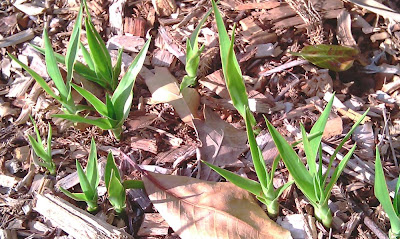Truly Tremendous (Tiny) Trees
This Dragon's Blood Tree in Sydney's Royal Botanic Gardens, but not its offspring, would be on some lists of magnificent/remarkable/signficant trees of the world. Sadly, as I reported some time ago, the parent tree no longer looks like this and its 'Safe Useful Life Expectancy', to use the technical term, is rather short.
There are books on remarkable trees, registers of the largest ones, and plenty of postings of people's favourites - I quite like this 2007 posting of the ten (plus some extra...) 'most magnificent trees in the world' even though there is a lot of human interference here that may not be to everyone's taste.
I started searching through these lists on the weekend after a lawyer from Pakistan, Imran Abbes, mentioned to me a Banyan Tree growing near his hometown in Midh Ranja, Pakistan. He said this specimen, called I think the Bergad (or Bargad) Tree, is one of the biggest and oldest trees in Pakistan, and perhaps the world. At 500 years it may be one of the oldest in his country but there are older and most likely larger fig trees elsewhere. In any case, Imran will send me a picture after he returns home and I'll post that later.
The problem, I find, is that most of these compendia concentrate on old and big trees. The Dragon's Blood Tree (or Dragon Tree or Dragon Blood Tree; Dracaena draco) above is moderately old at 100 or so years, and relatively big for this species. It's a lovely specimen and perhaps one of the favourites in our botanic garden. But should we start loving one of the seedlings (pictured above) that may have to replace it one day?
There seems to be little time or inclination to enjoy a tree in its youth. And as our Dragon's Bood Tree story demonstrates, every magnificent tree has a start and an end.
As an aside, I've given a talk a couple of times about 'why plants are immortal', where I explain the ideas of French botanist Francis Hallé, who argues that the length of life of a tree is "only limited by unfavourable external conditions: earthquakes, bad weather, diseases, large predators.” He bases this conclusion on a view that trees are in fact colonial organisms and that each growing tip can be considered an individual - so the tree itself is a collection of individuals that lives as long as it's scaffolding (which he equates to a pile of 'excrement' - wood being primarily waste products of the growing tips...) survives.
Anyway, the reality is that trees to die and our lists much continue to be updated. However I'd like to see a few youthful sprouts added to these lists and I give you two suggestions here.
This is a White Fig (Ficus virens) planted to replace the ten Moreton Bay Figs removed along Hospital Road in Sydney's Domain, in 2004.
This was significant for me of course given the misinformed and misguided campaign at the time trying to stop us do what we do every day - care and manage the plants in our estates, taking into account the past, present and future. This is the beginning of a collection of trees that all the kids in this picture will enjoy through their lives.
And the second example is a pretty obvious one, the first Wollemi Pine grown in cultivation. It was planted in Sydney's Royal Botanic Garden in October 1996, two years after its discovery in a remote canyon north of Sydney. Thanks to the propagation research by our scientists at Mount Annan, and the commercialisation and distribution program by Wollemi Australia, this species is now growing in gardens all over the world. The tree remains threatened in its natural habitat due to low numbers and the risk of fire and disease but the species itself is unlikely to go extinct. So this 14-year-old tree is worth celebrating.
I'm sure there are lots of other remarkably magnificent young trees.




Comments
In Icod de los Vinos (Canary Islands, Spain) they have a great Dragon Tree of 17m in height and has been experiencing problems in the trunk. The tree has now some fans installed to avoid fungus.
http://www.parquedeldrago.es/html/index_imagenes.html